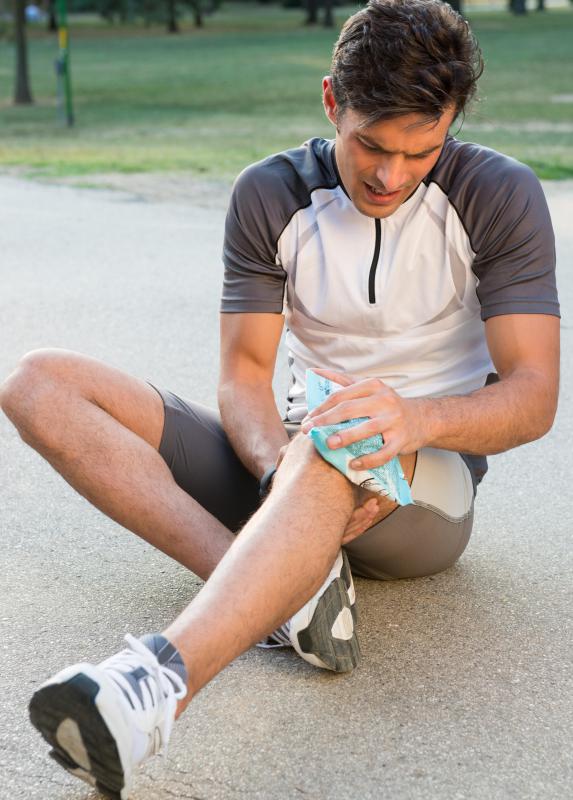At WiseGEEK, we're committed to delivering accurate, trustworthy information. Our expert-authored content is rigorously fact-checked and sourced from credible authorities. Discover how we uphold the highest standards in providing you with reliable knowledge.
What Are the Best Tips for Sports Rehabilitation?
Sports rehabilitation, also known as sports rehab, refers to the medical care, physical therapy treatment, athletic training modalities and other necessary therapies that are provided to an athlete in order to return him — if at all possible — to his previous level of athletic functioning. At one time, this multidisciplinary approach to recovery was only available to professional athletes or Olympians. Now, however, this skill and level of attention is also available to amateur athletes of any age. Sports rehabilitation can be basically subdivided into physical, mental and psychological aspects. Without emphasis on all three aspects of rehabilitation, not only is there a higher potential for re-injury, but also an athlete loses a valuable opportunity to deepen his abilities in discipline and focus.
The primary aspect of sports rehabilitation is usually of a physical nature. A physical injury is allowed to mend with rest, treated with one or more physical therapy modalities, or surgically repaired. Depending upon the diagnosis, the least invasive treatment option may first be tried for effectiveness, with surgical intervention saved as a last resort. Other diagnosed injuries that involve tears to ligaments, tendons, nerve or bone may require an immediate operative repair, with the majority of sports rehabilitation activity to take place after surgery. Whichever option is utilized, the athlete usually garners improvement in his sports rehabilitation program commensurate with his effort.

The mental, or cognitive, aspect of an athlete's sports rehabilitation program is sometimes overlooked, yet extremely important. Education is the primary focus of this aspect of sports rehabilitation. The athlete should be educated by all healthcare providers regarding his injury, all treatments, medications, exercises and the rationale for each. Not only does this instruction increase the athlete's compliance with the prescribed program, but this education also potentially helps prevent re-injury by eliminating hazardous activity, strengthening oppositional muscle groups and improving balance. Proper nutrition for recovery is also an important topic to be addressed during this timeframe.

The last major aspect of sports rehabilitation — the psychological aspect — requires the greatest personal investment and energy from the athlete. Despite an injury and probable pain, a positive attitude must be maintained in order to hasten and strengthen recovery. Maintaining such a positive attitude despite these barriers trains the athlete in mental discipline, concentration and focus. It is this last aspect of sports rehabilitation that cannot be prescribed by a doctor or coaxed by a coach, yet pays dividends when the athlete is able to return to competition.
AS FEATURED ON:
AS FEATURED ON:













Discuss this Article
Post your comments